Worrying about ticks is not a seasonal occurrence in Georgia like it is in other states as the mild and moist climate is perfect for year-round tick productivity. The ticks in Georgia are harbingers of a variety of diseases, so concern about 10 of the ticks you’ll see in Georgia is not only warranted but prudent.
One comforting thing to remember when contemplating the possibility of an infectious tick bite is that most of these diseases are easily treated with antibiotics. Some ticks have their preferred spots on the human body so specific preventative measures can be taken.
To avoid tick bites at home, keep your dog’s pest medication up-to-date and keep your lawn clipped short. Most ticks like to stand on a blade of grass and wait for something to pass by. You can prevent them around your home by taking away their favorite prey perch.
There are 22 recorded tick species in Georgia and we’re going to discuss 10 of them now.
10 Ticks in Georgia
10 of the ticks in the state of Georgia are:
- Lone Star Tick
- American Dog Tick
- Brown Dog Tick
- Rabbit Tick
- Ixodes Minor
- Deer Tick
- Asian Long-Horned Tick
- Gulf Coast Tick
- Groundhog Tick
- Ixodes Brunneus
1. Lone Star Tick
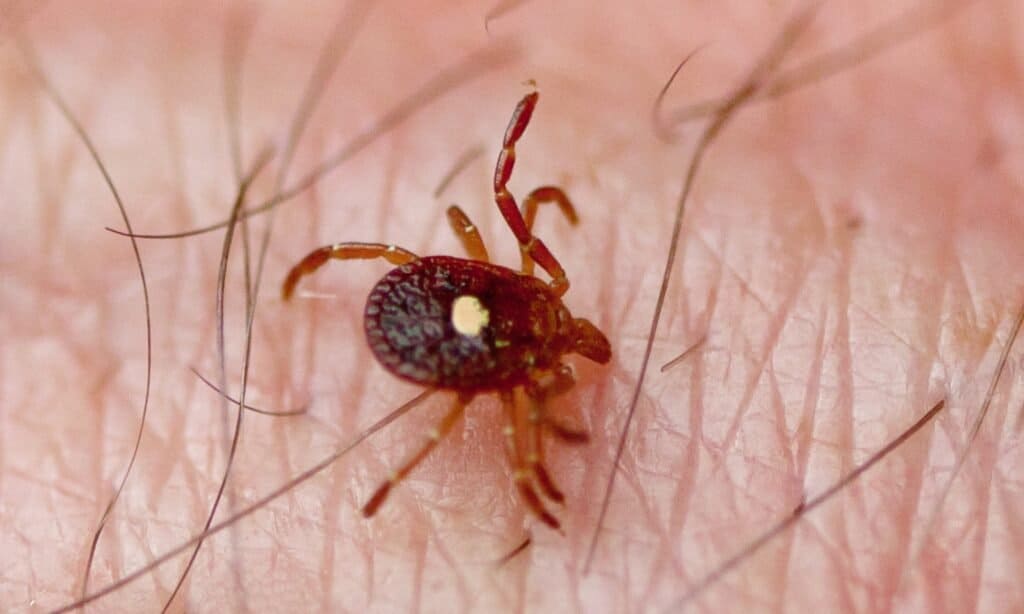
Lone star ticks transmit the heartland virus in Georgia.
©iStock.com/epantha
Females have an easily identifiable single white spot on their backs. Their mouths are also longer than the other ticks on this list. As adults, they’re about 4-6 mm long.
These ticks prefer dogs, humans, deer, and livestock. They’ll also go after rodents and birds. When it does bite a human, it’s usually found near the groin, on the butt, or on a lower extremity. You’re most likely to encounter them in shrubby low-lying floodplains where deers are readily found. They’re the most common tick that humans encounter in Georgia.
The heartland virus in Georgia is transmitted by lone star ticks. The specific virus that the ticks are transmitting is endemic to the state, and one in 2,000 ticks are infected.
2. American Dog Tick
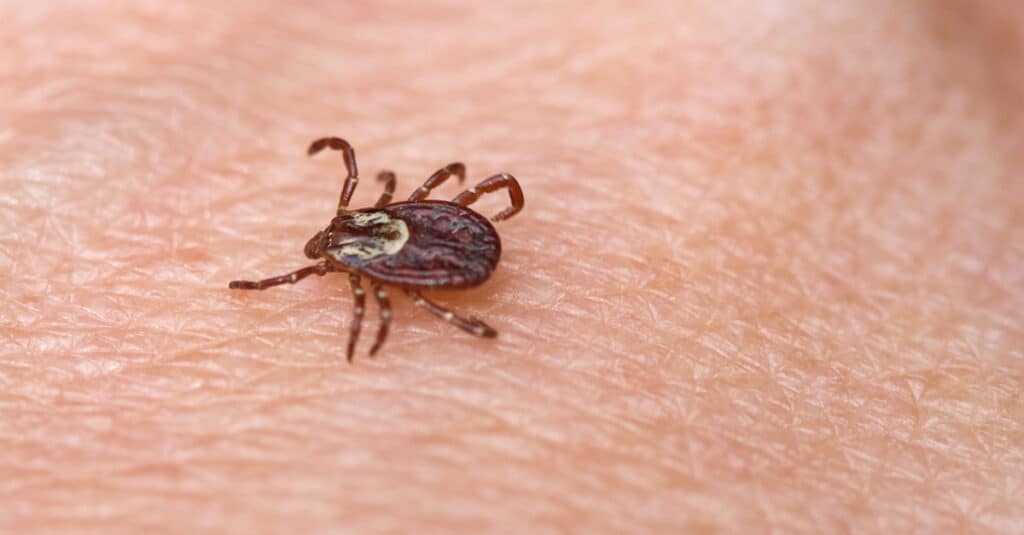
American dog ticks tend to bite humans on the neck and head.
©Melinda Fawver/Shutterstock.com
As their name suggests, this tick prefers to feed on dogs. It also readily bites humans, raccoons, and other medium-sized mammals. When it does bite humans, it prefers to go for the neck and head.
The primary vector for Rocky Mountain spotted fever is the American dog tick. They aren’t fond of forests and prefer to hang out in second-growth forests, shrublands, and fields.
3. Brown Dog Tick
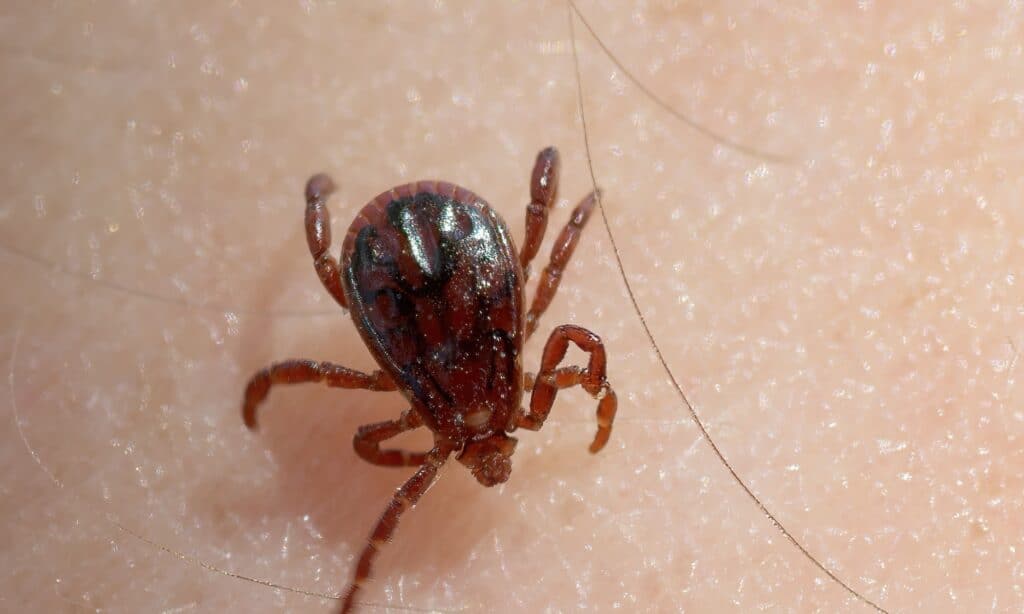
Brown dog ticks have no problem living indoors.
©iStock.com/RobertAx
These ticks are comfortable living indoors while other ticks are not. They’re reddish-brown and they’re a common pest around the world.
As their name implies, they prefer dogs, but they’ll make a meal out of what is convenient. Their common appearance in kennels and dog bedding has earned them their name.
4. Rabbit Tick
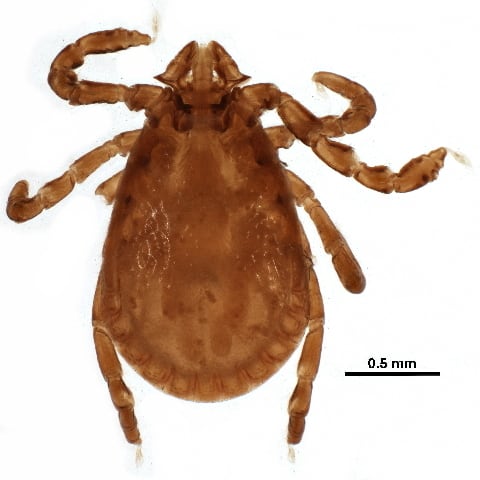
Rabbit ticks rarely bite humans.
©CBG Photography Group, Centre for Biodiversity Genomics / Creative Commons – License
Also known as the grouse tick, these ticks are mostly found on rabbits. They rarely bite people. They’re deep reddish-tan and their preferred habitats are forests.
Rabbit ticks like to go for the neck and between the ears of a rabbit.
5. Ixodes Minor
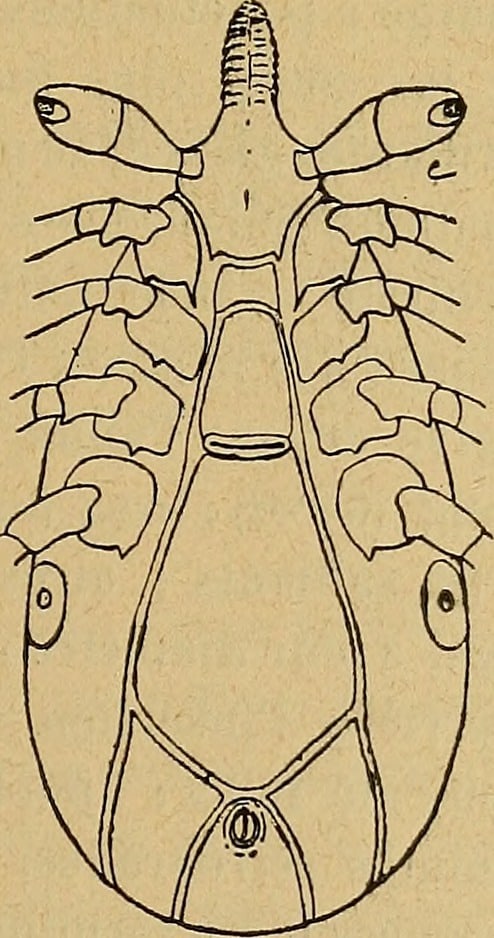
Ixodes minor prefers birds and rodents.
This tick is most common along the southern coast of Georgia. This tick is a known vector of Lyme disease. There haven’t been sufficient studies done to determine how prevalent human bites are in the general population.
These ticks like to prey on northern cardinals, roof rats, marsh rice rats, northern waterthrushes, Carolina wrens, cotton mice, and other birds and rodents.
6. Deer Tick

Deer ticks are the primary vector for Lyme disease.
©iStock.com/Ladislav Kubeš
The deer tick is also known as the black-legged tick due to its characteristic black legs. While its name suggests that they primarily are found on deer, it’ll go after other medium-sized mammals too. Humans are on this menu as are domesticated cats. There is no preference regarding where on the body this tick attaches when it takes a human as a host.
Deer ticks are the primary vector for Lyme disease. One of their primary food sources during a couple of stages of their life cycle is white-footed mice. These mice are the primary reservoir for the bacteria that causes Lyme disease.
7. Asian Long-Horned Tick
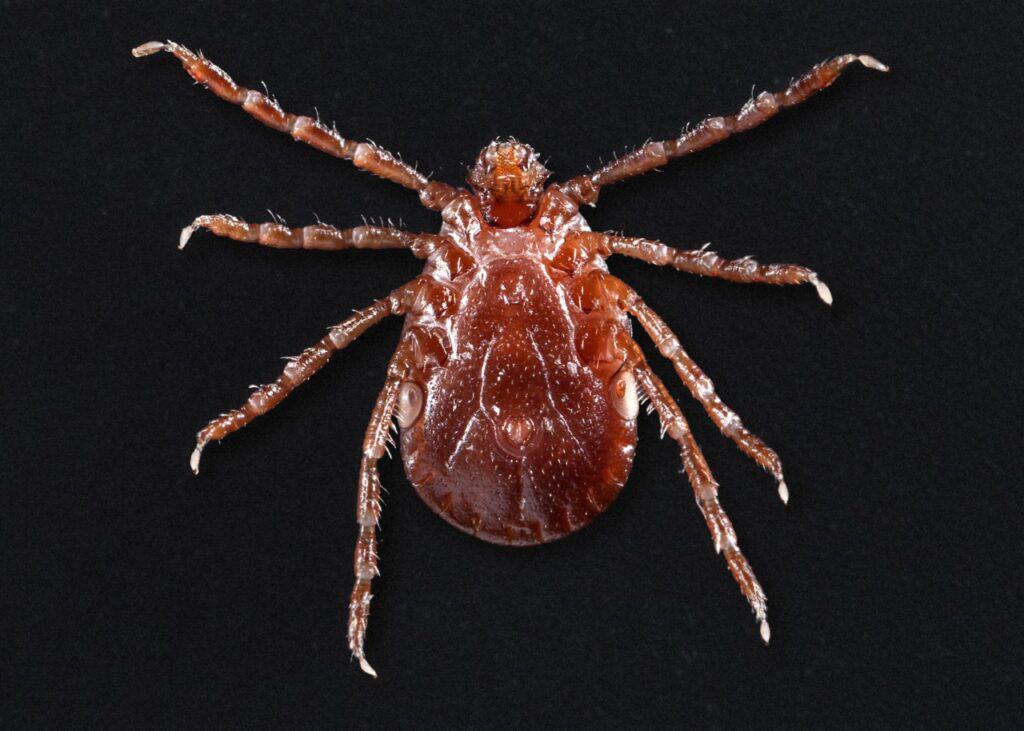
The Asian long-horned tick is an invasive species in Georgia.
The Asian long-horned tick is an invasive species that lives in Georgia. It originated in parts of Asia, and it was discovered in Georgia in 2021.
Asian long-horned tick carries diseases in Asia that haven’t yet made it to the United States which causes warranted worry. It is a known vector of Dabie bandavirus as well. Because the heartland virus is so similar to the Dabie bandavirus, it’s feared that this tick will become a vector for that as well.
This tick doesn’t need to mate to reproduce so it can spread much quicker than other ticks on this list. It goes after livestock and attacks them in numbers that overwhelm a single animal. It can become weak due to blood loss, and in some cases, die from the overwhelming number of ticks.
8. Gulf Coast Tick
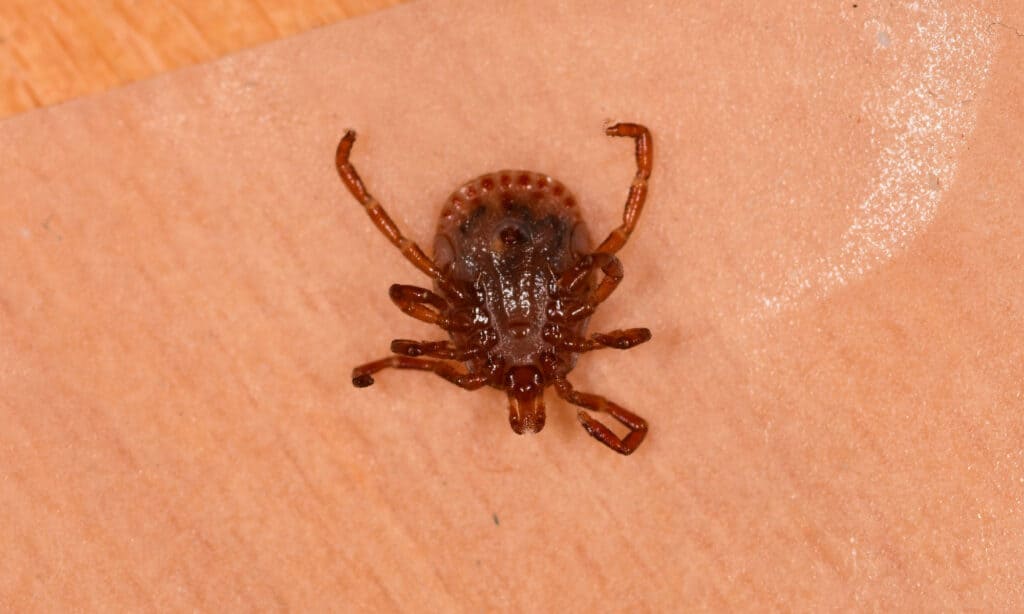
The Gulf coast tick causes screwworm infections in cattle.
©iStock.com/cturtletrax
Gulf coast ticks are transmitters of Rocky Mountain spotted fever, though they mainly feed on deer. They will readily go after humans if given the chance. They also feed on cats, dogs, and coyotes.
The effects that their predation has on cattle is the most important threat from this tick. Gulf Coast ticks create wounds when they drop off, which allows flies to lay eggs in the cow’s flesh. This creates a prime opportunity for screwworm infections, which can be devastating.
9. Groundhog Tick

Groundhog ticks can survive over a year without a real meal.
©iStock.com/jonnysek
This tick is more commonly found near Georgia’s coastline. Also known as the woodchuck tick, they’re mostly found on groundhogs. They’re also seen on dogs, cats, raccoons, porcupines, and foxes.
The groundhog tick is another on our list of 10 ticks in Georgia that doesn’t really bite humans. It’s not an impossible occurrence, though. They can go about a year without eating.
10. Ixodes Brunneus
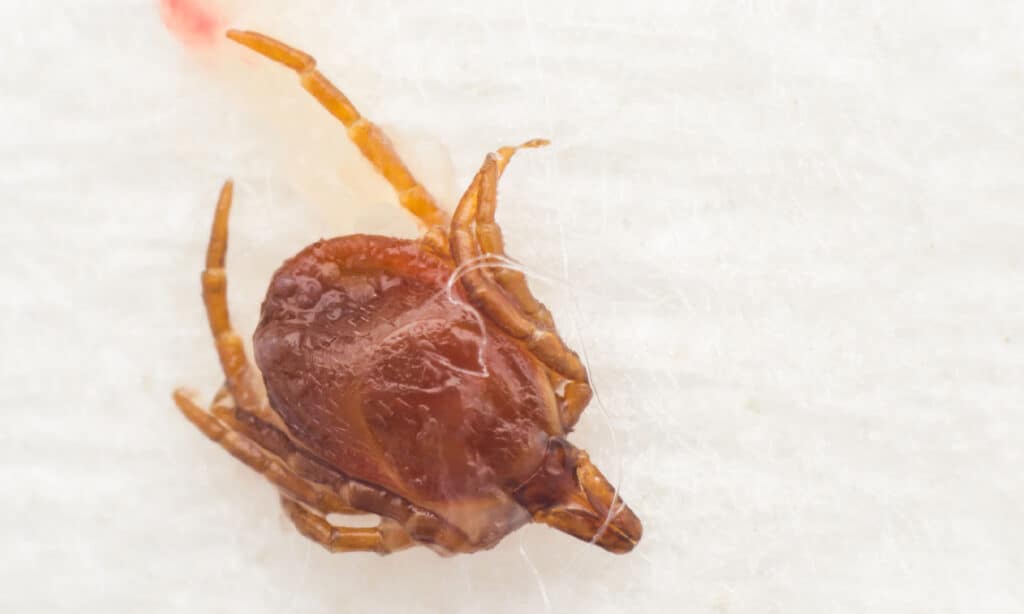
Ixodes Brunneus feeds almost exclusively on birds.
©iStock.com/Todorean Gabriel
While these ticks feed almost exclusively on birds, they’ve also been seen on the marsh rice rat on rare occasions. They rarely bite humans.
They are primarily along Georgia’s coast though they can be found throughout the entire state.
The photo featured at the top of this post is © iStock.com/epantha
Thank you for reading! Have some feedback for us? Contact the AZ Animals editorial team.






